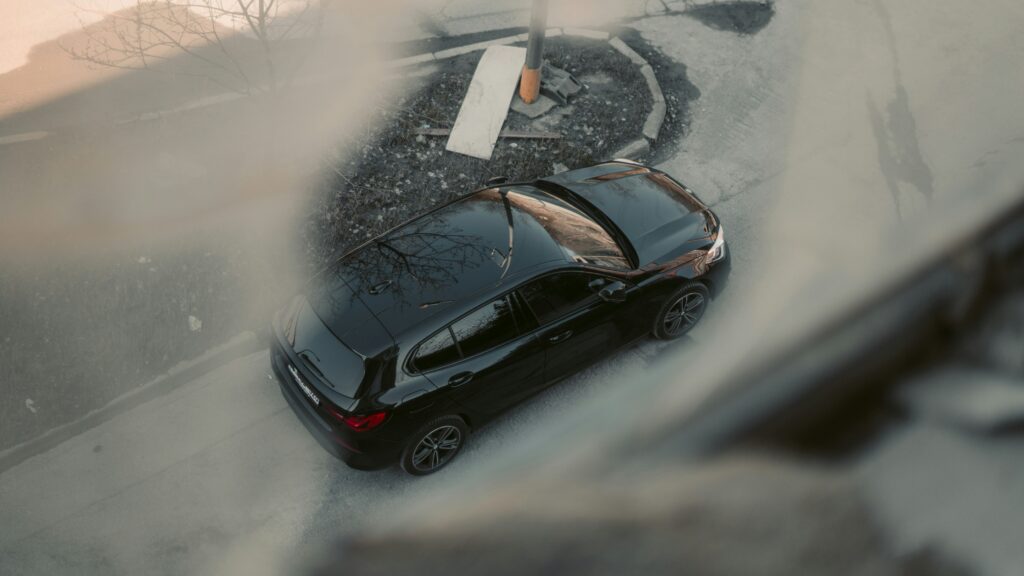Tinted windows can enhance the aesthetics of your vehicle while also providing numerous practical benefits, like UV protection and increased privacy. However, this enhancement can range from $250 to $800, making it an expensive investment. Proper cleaning and maintenance are essential to protect the longevity and clarity of your tinted windows. Join us as we guide you through cleaning and maintaining your tinted windows, promoting longevity and preserving their appearance.
Understanding Tinted Windows
Tinted windows are a popular vehicle modification where darkened polyurethane film is applied to the windows of a vehicle. This kind of film enhances a vehicle’s aesthetics and provides many practical benefits. Firstly, they protect against harmful UV rays, shielding occupants from potential skin damage and reducing the risk of interior fading. Additionally, tinted windows provide privacy by obscuring the view into vehicles or buildings, enhancing security and comfort.
Many kinds of window tints are available, each providing different benefits for car owners. Here are some of the most common options:
-
Dyed Window Tints
This is the most popular option, providing the classic darkened appearance.
-
Metallic Window Tints
Metallic tints offer a mirror-like aesthetic while providing maximum heat rejection.
-
Hybrid Window Tints
This kind of tint offers the best of both worlds from dyed and metallic tints.
-
Carbon Window Tints
Carbon window tints create a matte, stealthy finish on a car’s windows.
Understanding Local Laws
If you’re new to the window tinting scene, you must check with your local government on the legal tinting percentages. In the state of Indiana, the regulations are as follows:
For Sedans:
- Windshield: Non-reflective tint is allowed above the manufacturer’s AS-1 line.
- Front Side windows: Must allow more than 30% of light in.
- Back Side windows: Must allow more than 30% of light in.
- Rear Window: Must allow more than 30% of light in.
For SUVs and Vans:
- Windshield: Non-reflective tint is allowed above the manufacturer’s AS-1 line.
- Front Side windows: Must allow more than 30% of light in.
- Back Side windows: Any darkness can be applied several (unspecified) inches from the top of the window.
- Rear Window: Any darkness can be applied several (unspecified) inches from the top of the window.
By understanding the nuances of tinted windows, individuals can make informed decisions regarding their installation and maintenance, ensuring maximum benefits and longevity.
Preparing to Clean Tinted Windows
The most important aspect of caring for tinted windows is the regular cleaning process. Gather all the required materials before washing your tinted windows, like microfiber clothes, mild car wash, distilled water, and a squeegee. Steer clear of harsh brushes, abrasive cleaners, or sharp objects that could scratch or puncture the tint film. If you’re using a new car wash solution, test the cleaner in a small, inconspicuous area of the window to ensure its compatibility with your tint. By taking the time to prepare, you can ensure a smooth and effective cleaning process that safeguards the integrity of your tinted windows.
Cleaning Tinted Windows
Now that you have gathered all your materials, follow these steps to conduct a thorough yet safe cleaning:
- Start by rinsing the exterior of the windows with clean, distilled water to remove loose debris and dirt. Avoid using hard water or water with additives, as this can leave stubborn water spots.
- Dilute a small amount of mild car wash or specialized window cleaner in more clean, distilled water.
- Use a soft, microfiber cloth or mitt to gently wipe the exterior of the tinted windows. Avoid using a circular motion, as this can leave more streaks.
- For stubborn stains or residue caused by environmental contaminants, avoid vigorous scrubbing, as this can damage the tint film. Instead, apply a small amount of cleaning solution to the affected area and allow it to soak for a few minutes. Then, use a soft microfiber cloth to gently buff out the stain.
- Rinse the windows thoroughly with clean water to remove any remaining soap residue.
- Use a squeegee or another clean microfiber cloth to remove excess water and prevent water spots from forming as the windows dry.
Though window tint is typically applied to the exterior of the windows, it is also important to keep the interior of the windows clean. Begin by vacuuming the interior of the vehicle or building to remove any loose dirt or debris that could scratch the tinted windows during cleaning. Using the same mild detergent solution, gently wipe the interior of the windows using the same method as the outside. Once the windows are clean, use a dry microfiber cloth to buff them to a streak-free shine.
Conduct this cleaning routine at least every two weeks or when your windows come in contact with contaminants like insects or bird droppings.
Tips for Long-Term Maintenance and Care
Regular maintenance and inspection of your tinted windows can prolong their lifespan and keep them looking clear and sleek. When you perform the cleaning routine described above, inspect your tinted windows for signs of damage. Common signs of damage include peeling, bubbling, and discoloration. If you notice any of these signs, it may be time to seek a professional. Professional window tinters can assess the integrity of your window tinting film and provide expert cleaning using specialized equipment and products, resulting in optimal performance.
Regularly cleaning and inspecting your window tints can prolong their lifespan, saving you money and keeping your car sleek.
Wraptitude Can Help!
A professional window tint installer can help you determine the best tint for your vehicle, given local regulations, your budget, and personal preferences. Wraptitude can help you pick the best tint for your unique needs. Reach out today to learn more about our window tints, paint protection film, and ceramic coatings!

